As we strive to get in better shape – for summer, for an occasion, or just to feel better – it is a good idea to check and “tune” our exercise routine. (You have one, right?). In this article, I wanted to talk about an immensely popular “new” form of exercise called High Intensity Interval Training (HIIT), aka High Intensity Intermittent Training. HIIT is an enhanced form of interval training. It alternates between short and intense bursts of exercise, and less intense recovery periods. For example, you could be sprinting “all out” for 1 minutes, then jogging for 30 seconds of recovery, and repeating the whole set four times. This will take just six minutes. (Of course, you also have to allow time for proper warm-up prior to performing the set, and for cooldown after the set).
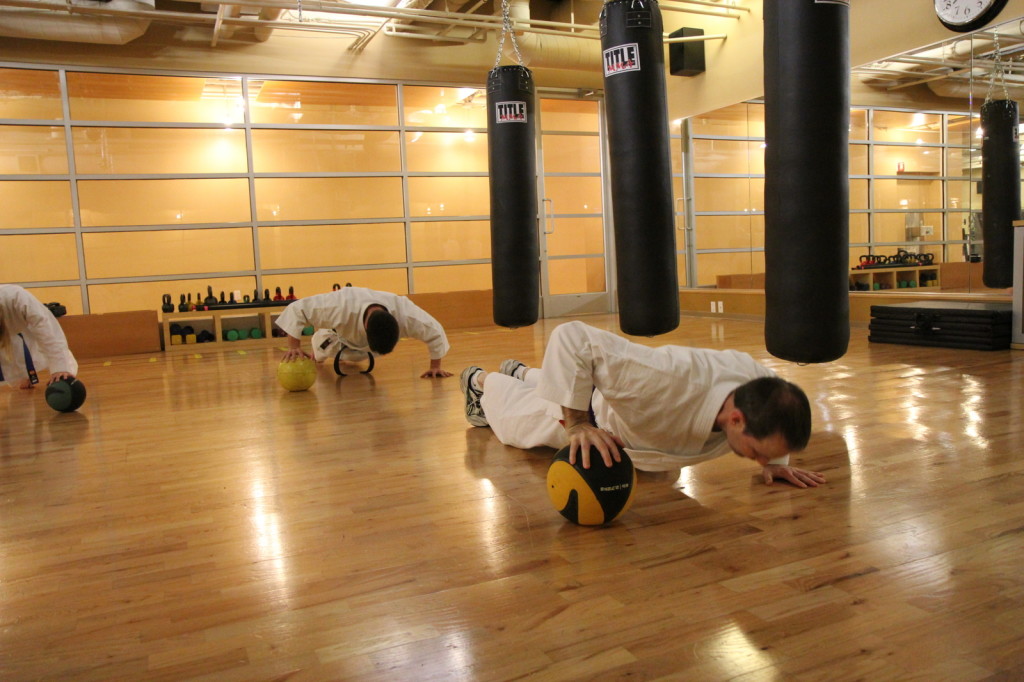
HIIT is very trendy. However, it is not new
HIIT has gained a lot of exposure recently. According a recent survey by the American College of Sports Medicine, HIIT is among the top fitness trends of 2014. The “Seven Minute Workout,” popularized by a New York Times article and a slew of apps, claims to confer fitness benefits in only 7 minutes! It gets even better: a study by Martin Gibala, a professor of kinesiology at McMaster University in Ontario, and his colleagues, shows improvements in fitness level from just one minute of intense exercise, repeated three times a week! (caveat: the workout was made of three 20 second intervals, interspersed by 2 minutes of easy work, for a grand total of ten minutes, warmup and cooldown included).
This is, in part, because it is a very efficient method to build strength, burn fat, and improve cardiovascular health. However, HIIT is not new. It has been used as early as in the 1970s to train track and field athletes. In the mid 1990s, Professor Izumi Tabata (then at the National Institute for Health and Nutrition in Japan) studied the effect of short but grueling workouts. Working with the Japanese Olympic speed skating team, Professor Tabata developed the Tabata Protocol. It uses 20 seconds of ultra-intense exercise, followed by 10 seconds of rests, repeated continuously for 8 cycles (a total of 4 minutes). Professors Tabata found that athletes who performed his 4 minute workout three times per week obtained similar gains to athletes who did steady state training five times per week. Additional studies, including a 2012 study by Professor Martin Gibala and at McMaster University in Canada also showed improvements in metabolic control under an HIIT exercise routine.
This sounds too good to be true!
You want to tell me that I don’t need to bike or run for hours? I can just work out for 4 minutes three times a week? Yes and no — I explain below.
HIIT Benefits
There are many benefits to HIIT:
- HIIT is very efficient. You can literally complete a workout in 15 minutes!
- HIIT helps your body burn fat. HIIT increases your metabolism not just during the exercise, but also in the hours following the exercise. This allows your body to burn fat. In fact, some studies shows more calorie and fat burn in the 24 hours following an HIIT exercise than following a steady-state exercise like jogging. Studies showed that performing HIIT workouts three times a week helped reduce body fat and leg and trunk fat more than steady state aerobic workouts.
- HIIT helps your heart stay healthy. The anaerobic activity that an “all out” effort requires has a lot of benefits for improving heart health. (Caveat: if you have heart problems, check with your doctor before engaging in “all out” efforts)
- HIIT improves your body’s metabolic response. Studies have shown that even just two weeks of HIIT can substantially improve insulin response and glucose tolerance. Borderline diabetic people were able to control their condition with an HIIT exercise regimen. Researchers hypothesize that this is due to HIIT using 80% of muscles in your body, compared to 40% in gentle, steady-state exercises like jogging or cycling.
Before you jump on HIIT, and stop doing any other forms of exercise, it would be helpful to note that steady-state aerobic exercise also has many benefits. For example, there is no better way to build endurance than to engage in your favorite activity for hours on end. Additionally, there are many meditative and mental health benefits to extended steady-intensity aerobic exercise. Such exercise helps calm your mind and sooth your body.
HIIT and Martial Arts
The Okinawan Shito-Ryu Karate we practice has HIIT “built into it”. In fact, self defense and fighting are, by nature, short and hyper-intense engagements.
If you have been training for a while, you probably noticed that our activity in class at Full Potential Martial Arts shifts back and forth from high intensity to lower intensity. From traditional dojos in Okinawa, and training halls in China, to modern Western boxing and MMA, you will find martial artists who use HIIT to get in better shape — whether for self defense, for fighting, or simply to enjoy life!
Here are some exercises that can be combines in a martial arts HIIT routine. Start with a one to two minute round of warm-up cardio, such as light running, jumping jacks, etc. Then start with the first round. Perform each exercise for 45 seconds, and rest for 20 seconds between exercises:
- Heavy bag punching (your favorite open hand, closed hand, or combination of techniques)
- Mountain climbers (knee to elbow in plank)
- Deep squat + rise to front kick
- Plank to push up to side plank, alternating sides
- Heavy bag roundhouse kick
- 360 degree pushup
- Step-back lunges to a kick / step-back lunges to a jump kick
- Boat to bicycle
Repeat the whole set twice.
Done at high intensity, you will be burning between 10 and 17 calories per minute, or between 300 and 510 for a quick 30 minute workout.
Some Caveats on HIIT Workouts
- Before engaging in HIIT, make sure that you can do the individual exercise with good form. Do not, under any circumstance, sacrifice form. Proper joint alignment and proper execution of technique are paramount. They “teach” your muscle memory proper movement and also help you avoid injury. If you are not sure how to do a proper pushup, squat, jump, punch, or any individual technique used in an HIIT session, just ask!
- Do not be discourages if you cannot complete all the HIIT repetitions the first time around. Just do your best. In a few sessions you will improve. Guaranteed!
- Likewise, if you feel too exerted or winded – take a rest.
- Push yourself! HIIT is intended to be difficult. It’s also short. So keep your eyes on the ball, and you will reap the benefits.
- But — be smart! If you pushed yourself to total muscle exhaustion, take a rest. A rare and very serious complication of HIIT regimes is exertional rhabdomyolysis (aka “rambo”), in which muscle tissue breaks down, and the body is not able to deal with the produced waste products. Very dark urine is a tell-tale sign of exertional rhabdomyolysis. Seek immediate medical help! With proper hydration before and during exercise, and with gradual buildup of your workouts over time (don’t go all out on day one!), you can reduce your risk of developing this very serious condition.
So whether you like steady state exercise such as walking or jogging, or interval training such as HIIT, the key to a healthy life is to exercise! As Nike likes to say: Just Do It! Or, to adapt a Chinese proverb: the journey to fitness starts in a single step.
See you at training!

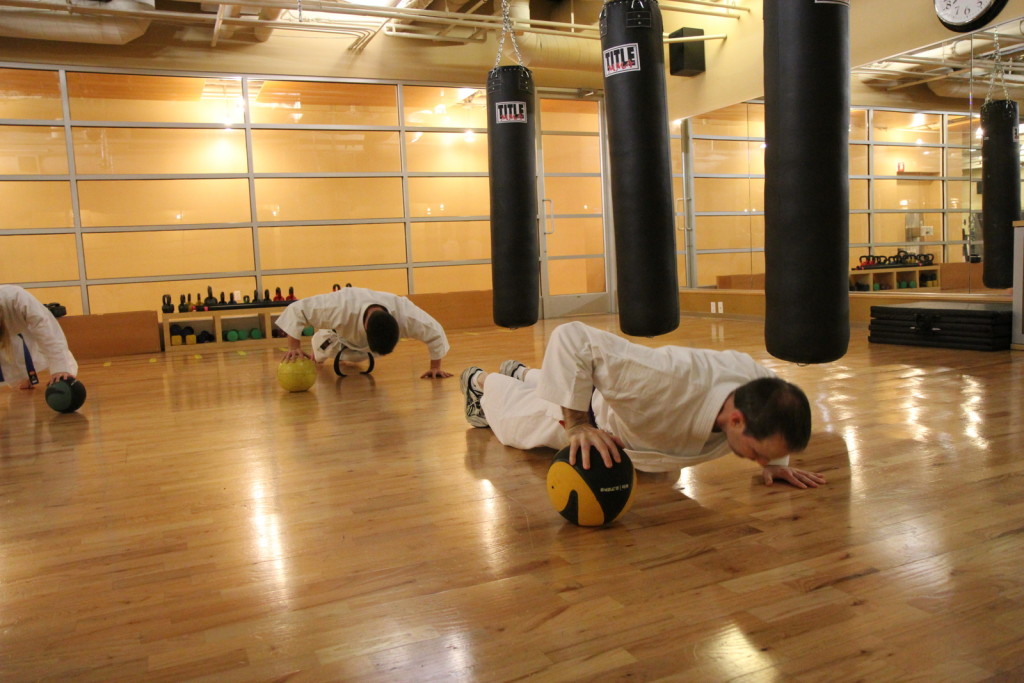

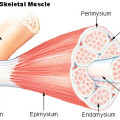
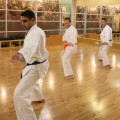
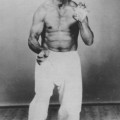
Great Article on HIIT and Martial Arts!!!
I have to admit, I truly enjoy that we incorporate HIIT into our training in the Dojo, it’s both challenging and rewarding; as well as beneficial to our health (as the article mentioned).
HIIT and Martial Arts are a great way to stay in shape or get in shape; if you’re new to working out.
The best part of training, is the journey…
Thanks for the martial arts stretching advice!
Keep up the excellent blog!
Excellent article on martial arts High Intensity Interval Training!
When you first start using High Intensity Interval Training, make sure you give it some time.
It will be tough in the beginning, and as your body gets used to the intensity of HIIT, it will get strong quickly.
Thanks for the HIIT in martial arts post! Very interesting background and training advice!
Excellent article on how HIIT martial arts workout works! Can you post some specific suggestions on HIIT routines specifically for martial arts?
Great article about HIIT in martial arts and karate!
Thanks!